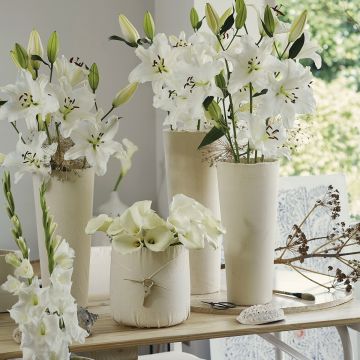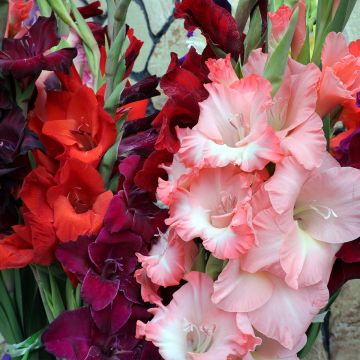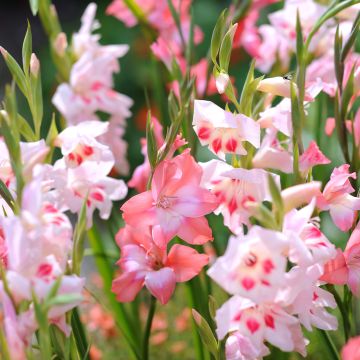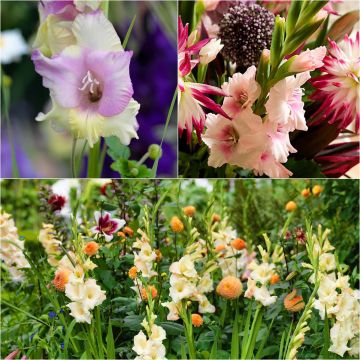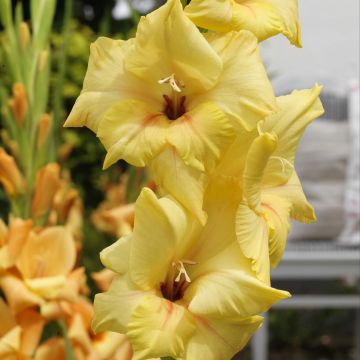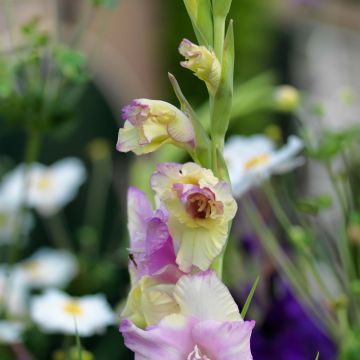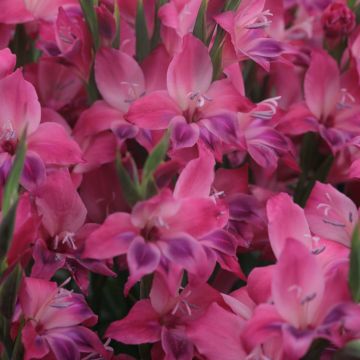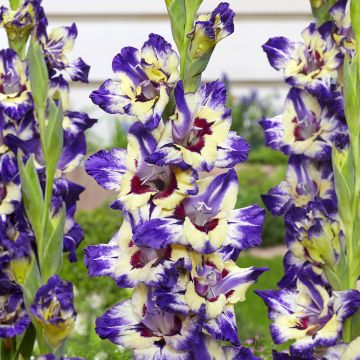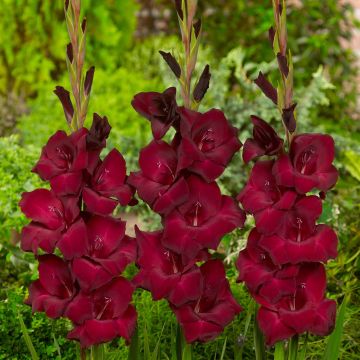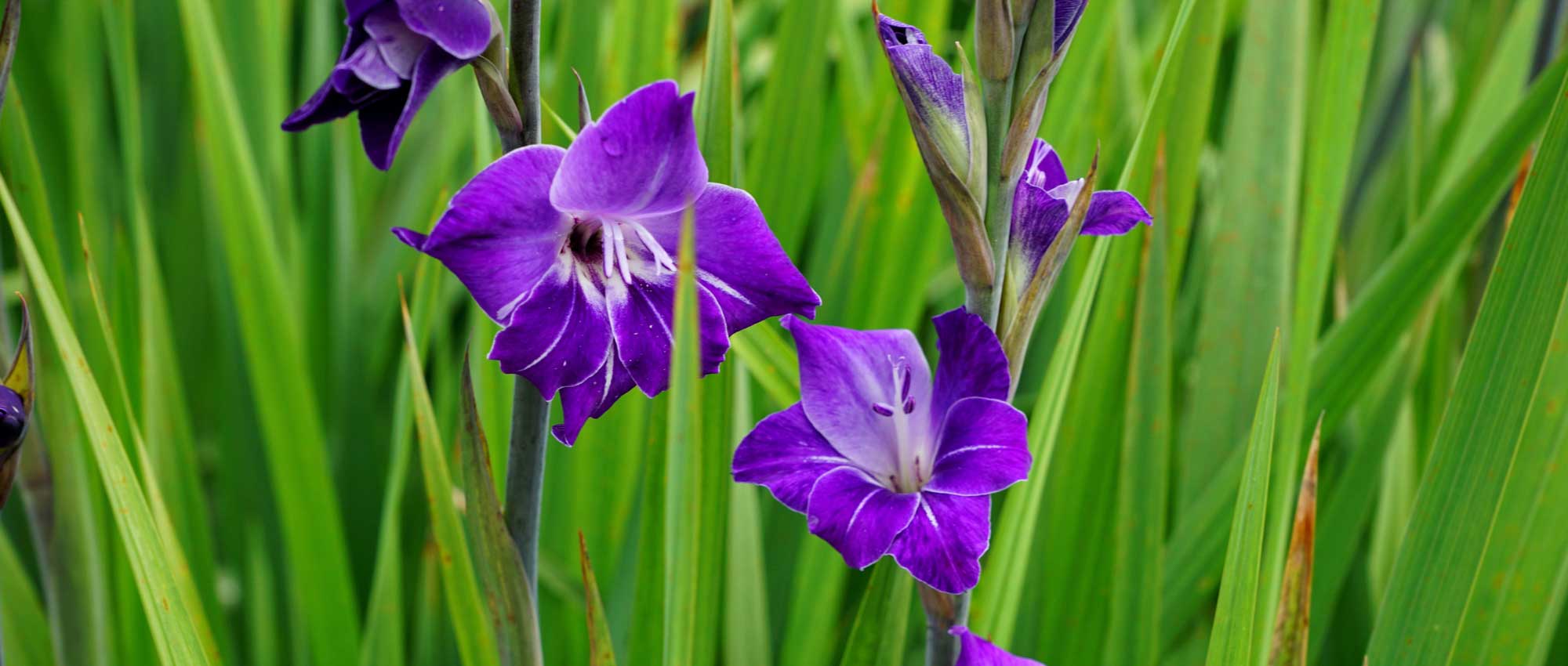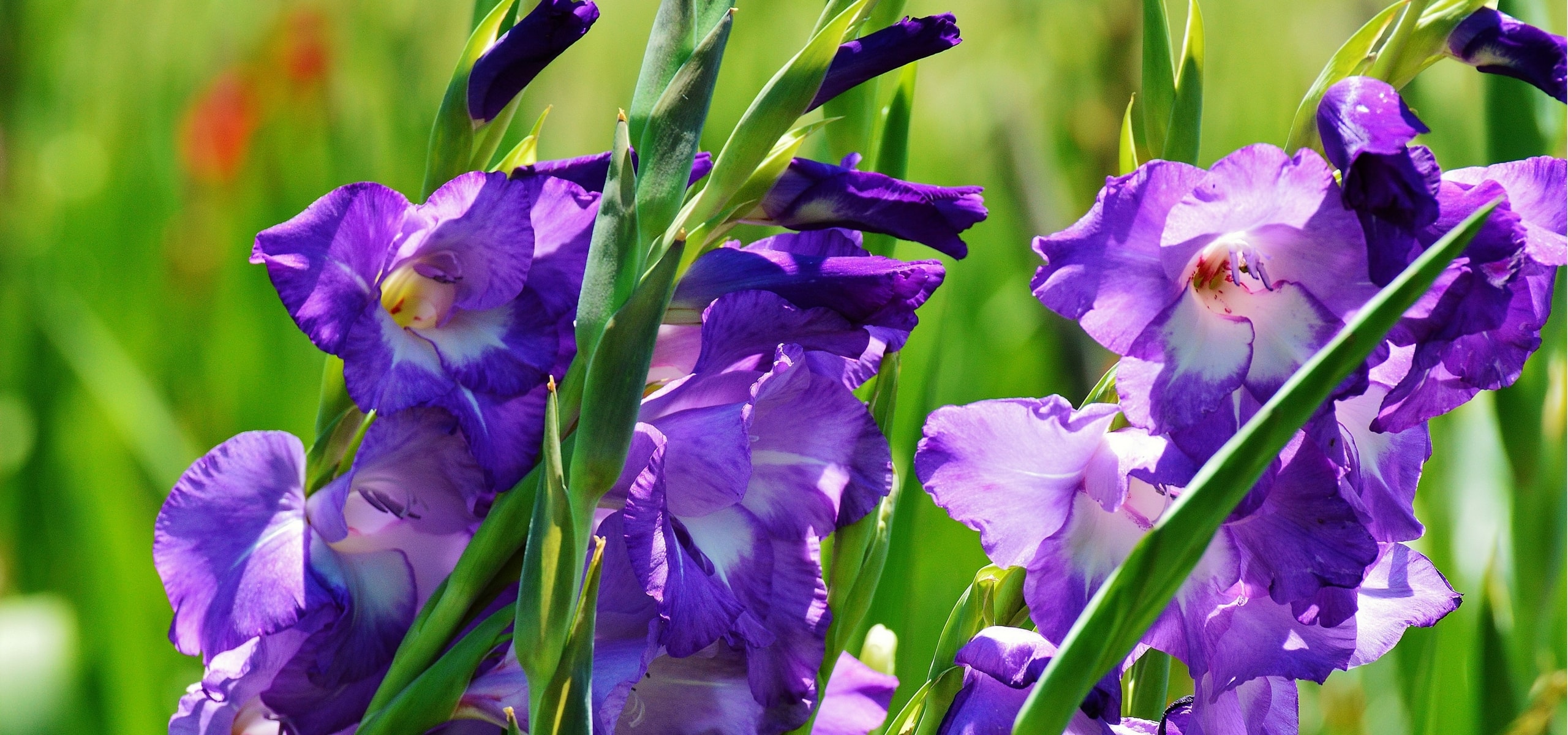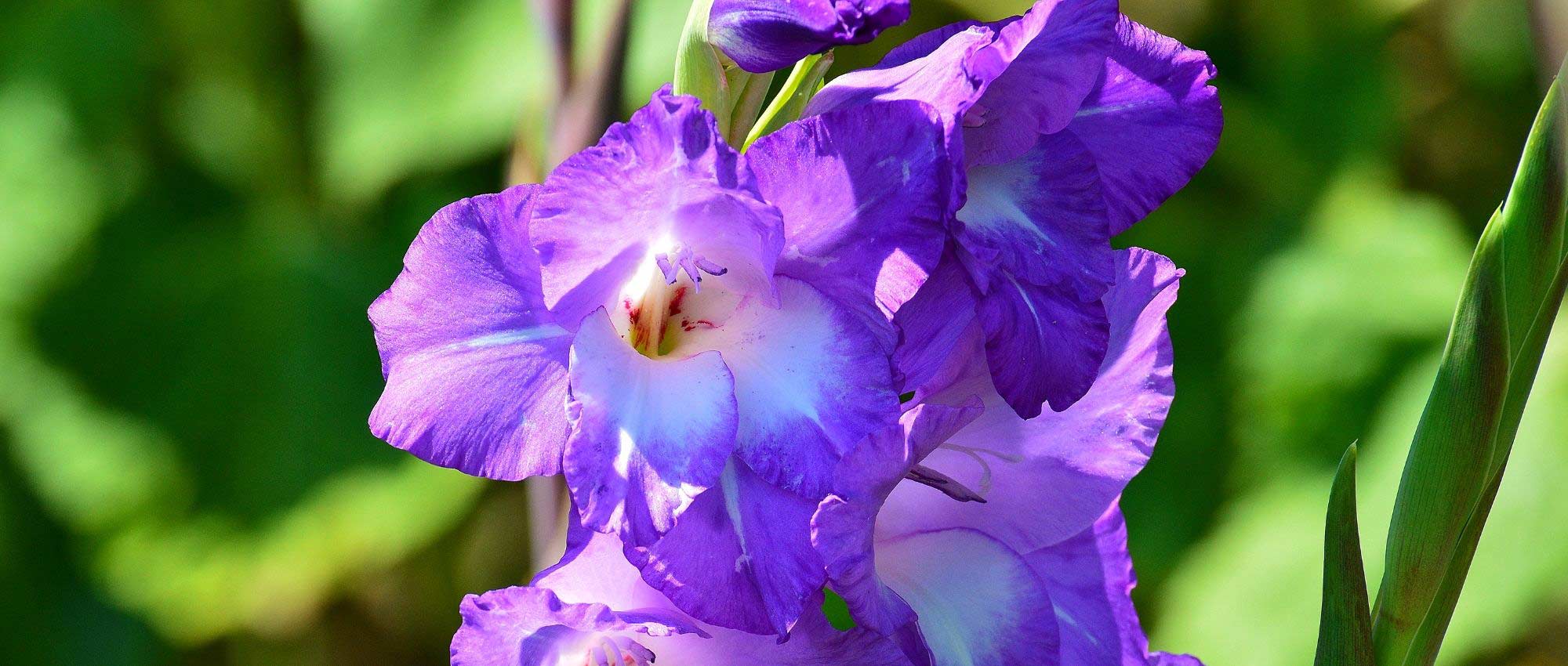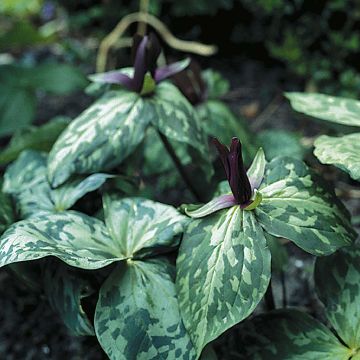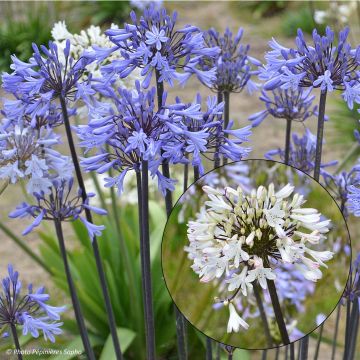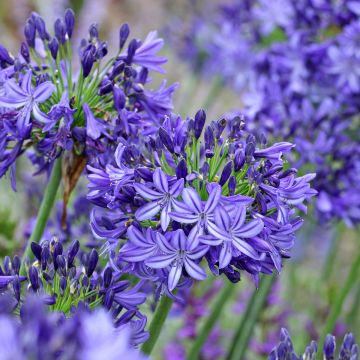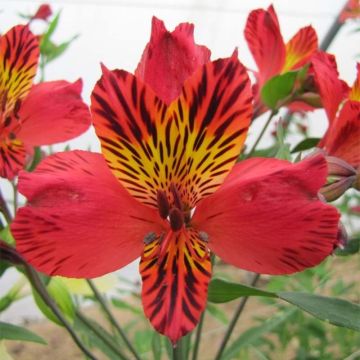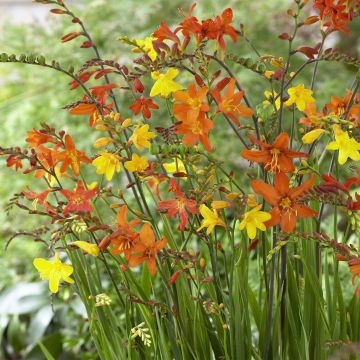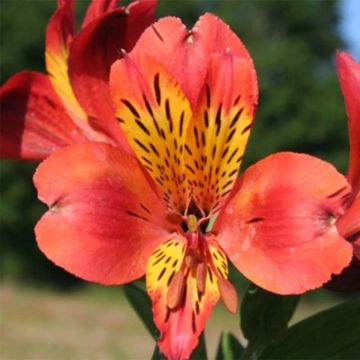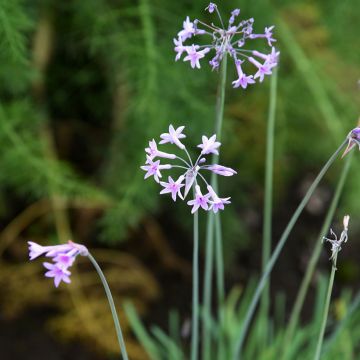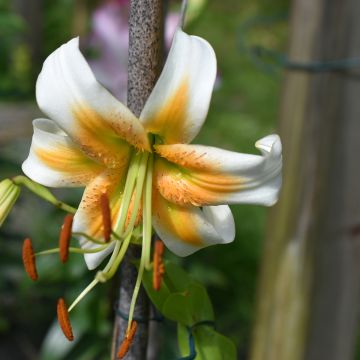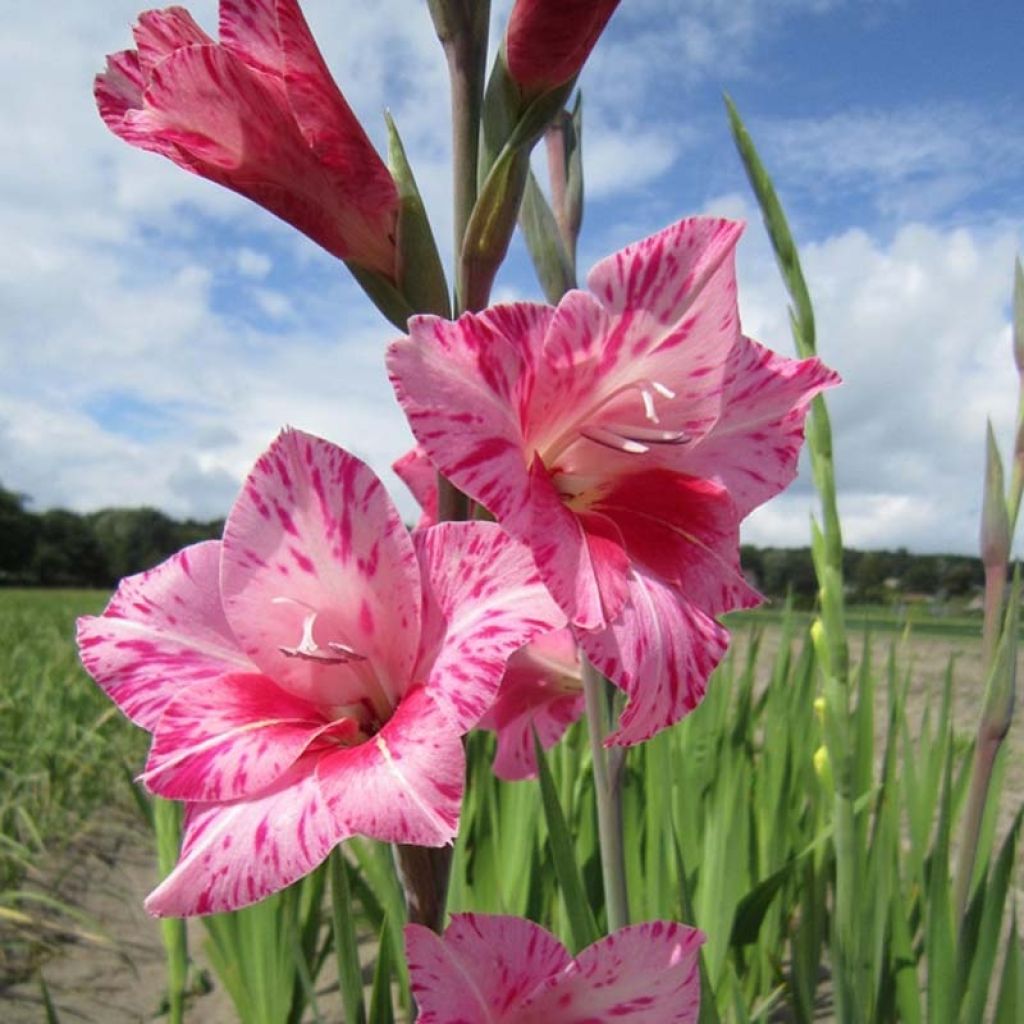

Gladiolus Bibi - Sword Lily
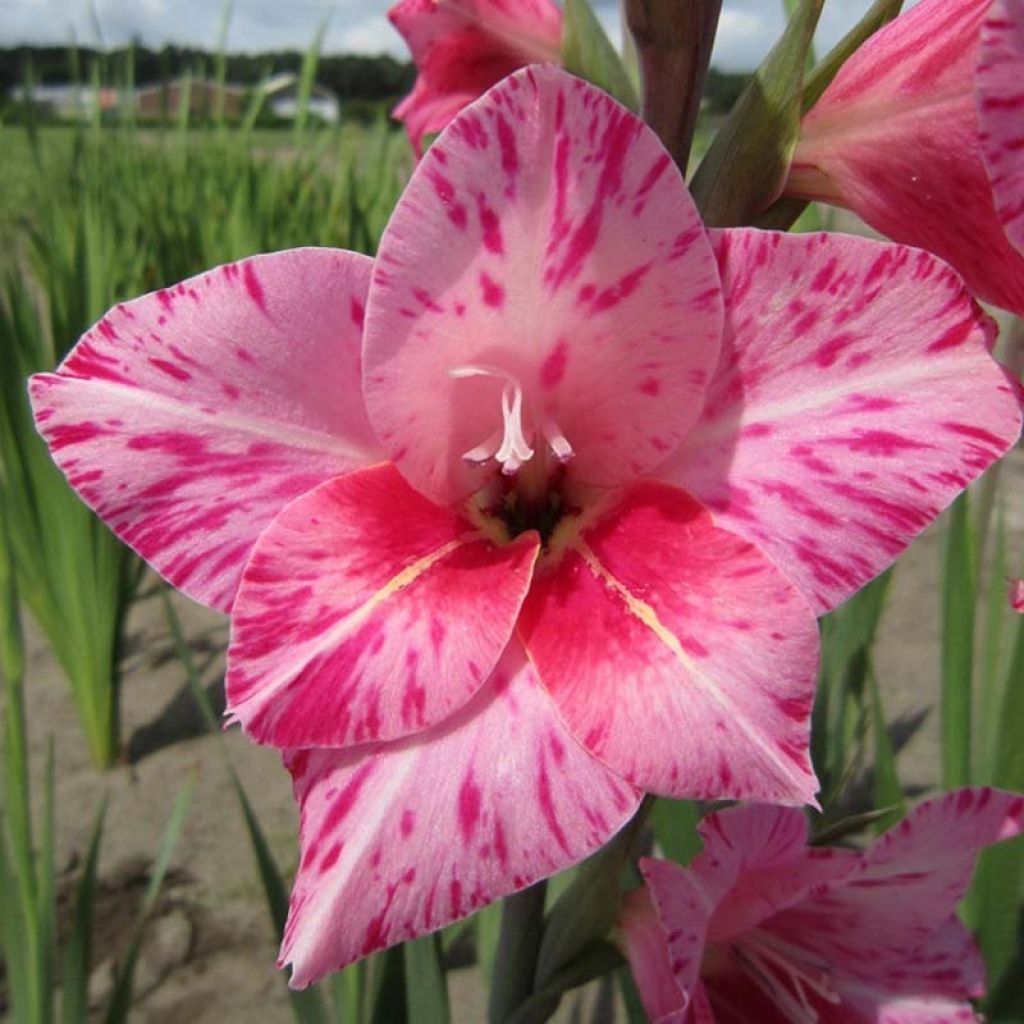

Gladiolus Bibi - Sword Lily
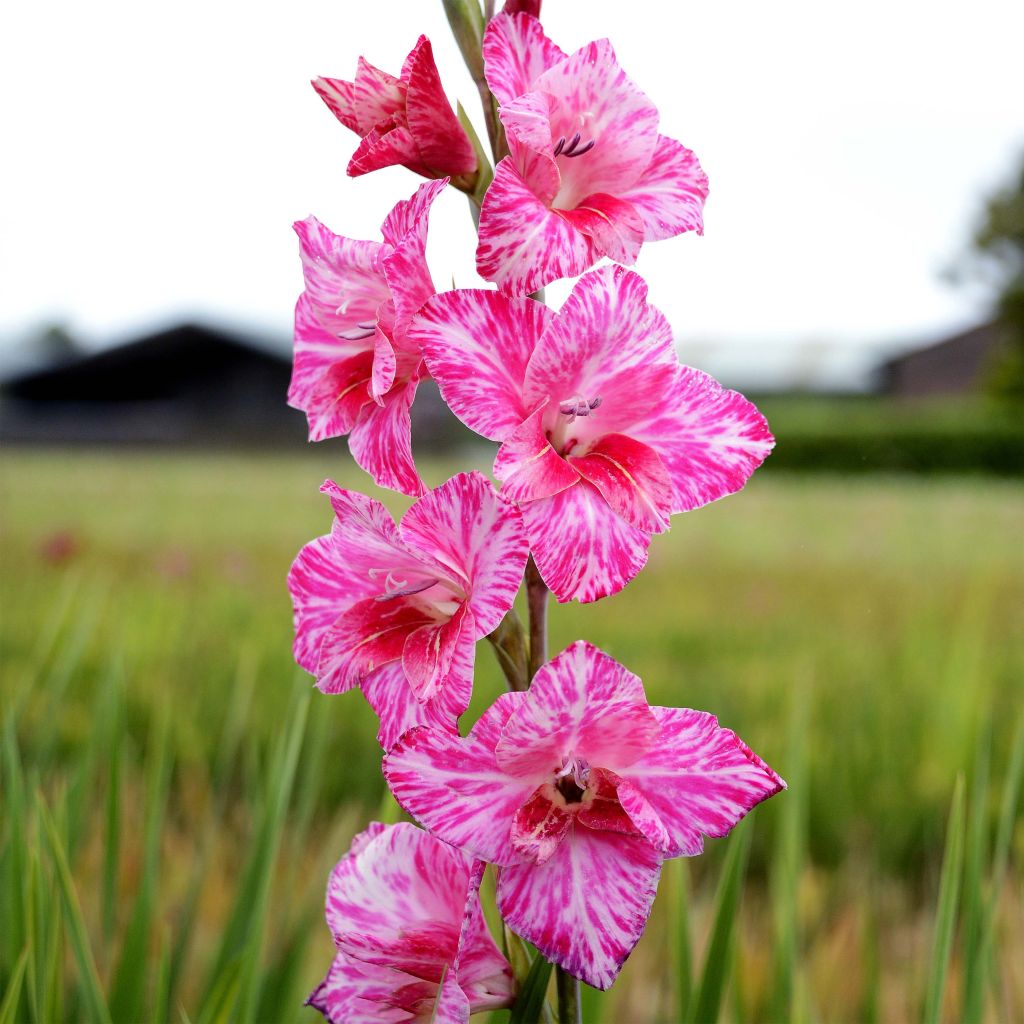

Gladiolus Bibi - Sword Lily
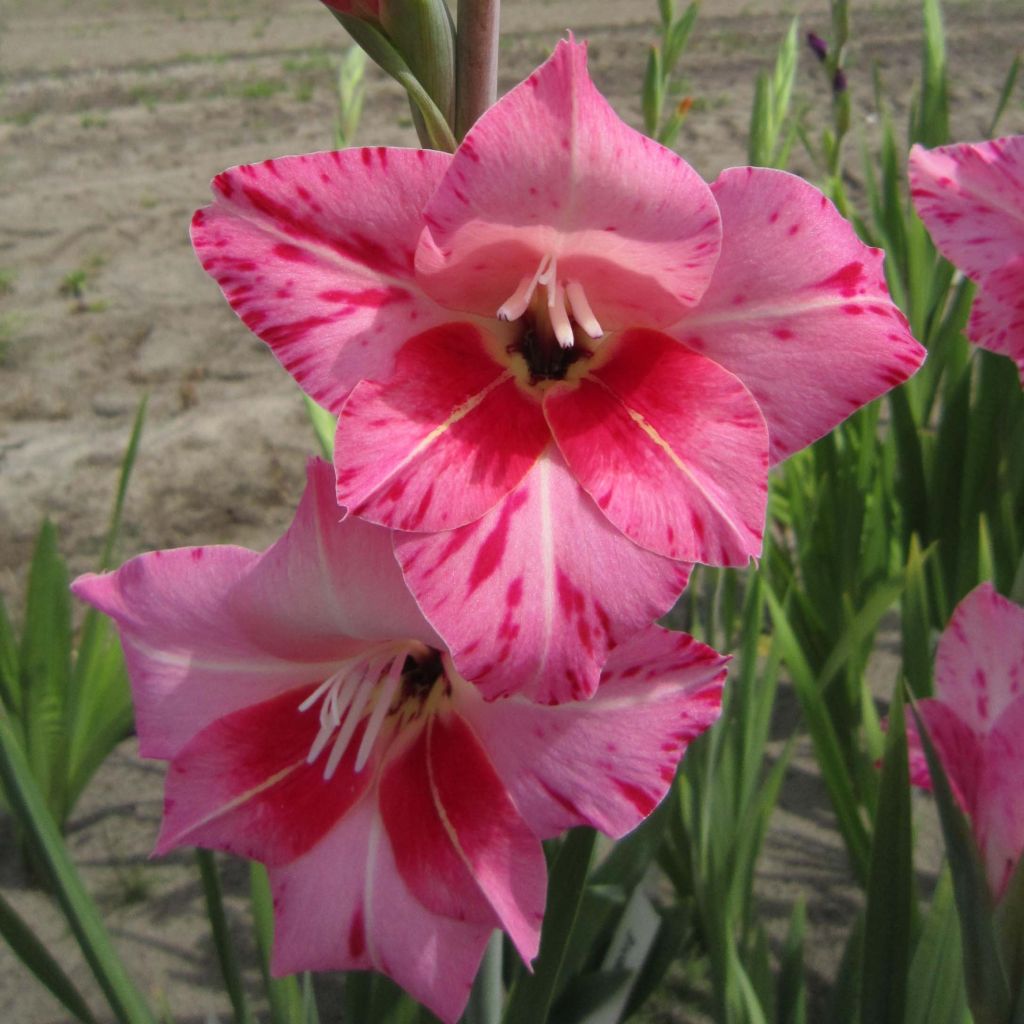

Gladiolus Bibi - Sword Lily
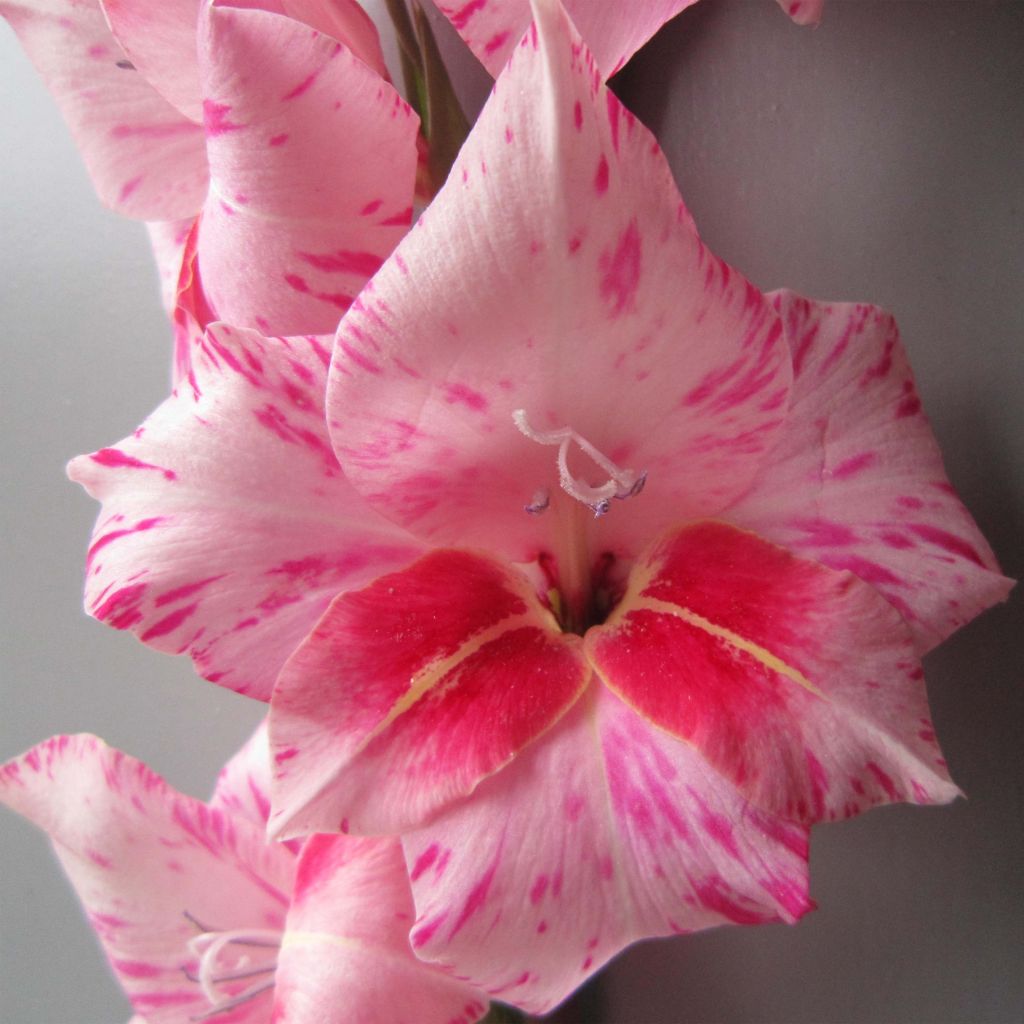

Gladiolus Bibi - Sword Lily
Gladiolus Bibi - Sword Lily
Gladiolus tubergenii Bibi
Waterperry Gladiolus
Special offer!
Receive a €20 voucher for any order over €90 (excluding delivery costs, credit notes, and plastic-free options)!
1- Add your favorite plants to your cart.
2- Once you have reached €90, confirm your order (you can even choose the delivery date!).
3- As soon as your order is shipped, you will receive an email containing your voucher code, valid for 3 months (90 days).
Your voucher is unique and can only be used once, for any order with a minimum value of €20, excluding delivery costs.
Can be combined with other current offers, non-divisible and non-refundable.
Why not try an alternative variety in stock?
View all →This plant carries a 6 months recovery warranty
More information
We guarantee the quality of our plants for a full growing cycle, and will replace at our expense any plant that fails to recover under normal climatic and planting conditions.
Does this plant fit my garden?
Set up your Plantfit profile →
Description
Gladiolus Bibi is a rare, original and charming hybrid gladiolus with adorable small flowers randomly striated with dark red-pink, on thin and short flowering stems. It often blooms from June and has a long flowering period as it renews itself on secondary flowering stems. The tubergenii gladioli are too seldom planted in our gardens: they can stay in the ground during winter in many regions, are splendid in perennial beds or with old roses and perfect for bouquets.
Cultivated gladioli are hybrids and belong to the Iridaceae family. They are divided into 3 main groups: Grandiflorus (large-flowered), Primulinus (early) and Nanus (butterflies). 'Bibi' is part of the "tubergenii," which are classified as Nanus. They are small, complex hybrids that tend to flower in spring. This variety, introduced in 1954, tolerates both heat and cold. In 2013, a virus-free clone with more speckled flowers and less susceptible to fusarium was selected and this is the form now offered to gardeners.
Gladiolus Bibi is a perennial herbaceous plant with a reserve organ. It stands out for its modest size and its cold resistance (to -12°C (10.4°F) under protective mulch), which allows it to overwinter in well-drained soil with protective mulch. The leaves are wide, sword-shaped and arranged in a fan forming a clump about 35 cm (14in) tall. The leaves are topped by one or several slender spikes, about 60-65 cm (24-26in) tall, bearing several funnel-shaped, 3 cm (1in) wide flowers. They are composed of 6 soft pink tepals variegated with cherry red, with the two lower sepals showing an intense cherry red spot at the throat. The reserve organ is a corm, which is a swollen stem with scales. The vegetation dries up a few weeks after flowering, marking the gladiolus's entry into dormancy.
While gladioli and their long colourful stems are often associated with the 70s and somewhat formal flower arrangements, the "tubergenii" have a more natural appearance and blend beautifully with other plants in the garden. They are just as easy to grow as most tulips in moderately cold climates and create stunning splashes of colour in beds and borders. For a romantic atmosphere, plant 'Bibi' alongside old roses, delphiniums, perennial geraniums, or perennial salvias to play with a range of colours, and add some grasses like Stipa to your bed. Gladioli are regulars in cottage gardens, where they are grown with vegetables. For bouquets, cut the flowering stems when the first floret begins to open. Plant them at intervals of two weeks from early spring until the end of June to have flowers in the house and garden all summer long.
Gladiolus gets its name from the shape of its sword-like leaves, derived from the Latin gladius. Its wild forms were often represented in jewellery or on carpets and fabrics made by the Semites before the Christian era.
Gladiolus Bibi - Sword Lily in pictures
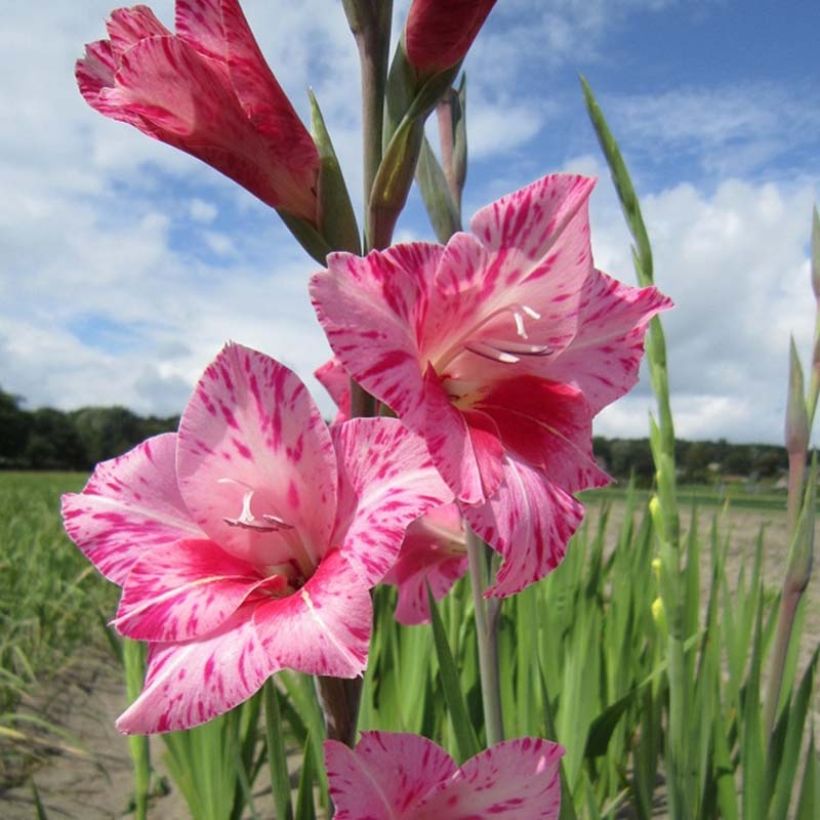

Plant habit
Flowering
Foliage
Botanical data
Gladiolus
tubergenii
Bibi
Iridaceae
Waterperry Gladiolus
Cultivar or hybrid
Planting and care
Gladiolus 'Bibi' loves rich, fertile, well-drained, sandy and loamy soil. Plant it in full sun. Space the bulbs 10 to 15 cm (4 to 6in) apart and cover them with 8-10 cm (3-4in) of soil. Avoid using manure to fertilise the soil, as it promotes bulb rot. This variety is capable of withstanding short frosts of about -12°C (10.4°F) if the soil is well-drained, even dry, and under a thick protective mulch. In cold regions, the corms should be dug up when the leaves have withered or immediately after the first frosts. Cut the leaves and let them dry in a well-ventilated place for three weeks. Separate the old bulbs and store the new bulbs and bulblets throughout the winter in a cool place, protected from frost. The bulblets will flower in two years. It is better not to plant gladiolus bulbs in the same spot for several years in a row. An annual rotation will yield better results. In favourable climates, the corms can be planted in September-October and left in the ground over winter without damage.
Planting period
Intended location
Care
Planting & care advice
This item has not been reviewed yet - be the first to leave a review about it.
Similar products
Haven't found what you were looking for?
Hardiness is the lowest winter temperature a plant can endure without suffering serious damage or even dying. However, hardiness is affected by location (a sheltered area, such as a patio), protection (winter cover) and soil type (hardiness is improved by well-drained soil).

Photo Sharing Terms & Conditions
In order to encourage gardeners to interact and share their experiences, Promesse de fleurs offers various media enabling content to be uploaded onto its Site - in particular via the ‘Photo sharing’ module.
The User agrees to refrain from:
- Posting any content that is illegal, prejudicial, insulting, racist, inciteful to hatred, revisionist, contrary to public decency, that infringes on privacy or on the privacy rights of third parties, in particular the publicity rights of persons and goods, intellectual property rights, or the right to privacy.
- Submitting content on behalf of a third party;
- Impersonate the identity of a third party and/or publish any personal information about a third party;
In general, the User undertakes to refrain from any unethical behaviour.
All Content (in particular text, comments, files, images, photos, videos, creative works, etc.), which may be subject to property or intellectual property rights, image or other private rights, shall remain the property of the User, subject to the limited rights granted by the terms of the licence granted by Promesse de fleurs as stated below. Users are at liberty to publish or not to publish such Content on the Site, notably via the ‘Photo Sharing’ facility, and accept that this Content shall be made public and freely accessible, notably on the Internet.
Users further acknowledge, undertake to have ,and guarantee that they hold all necessary rights and permissions to publish such material on the Site, in particular with regard to the legislation in force pertaining to any privacy, property, intellectual property, image, or contractual rights, or rights of any other nature. By publishing such Content on the Site, Users acknowledge accepting full liability as publishers of the Content within the meaning of the law, and grant Promesse de fleurs, free of charge, an inclusive, worldwide licence for the said Content for the entire duration of its publication, including all reproduction, representation, up/downloading, displaying, performing, transmission, and storage rights.
Users also grant permission for their name to be linked to the Content and accept that this link may not always be made available.
By engaging in posting material, Users consent to their Content becoming automatically accessible on the Internet, in particular on other sites and/or blogs and/or web pages of the Promesse de fleurs site, including in particular social pages and the Promesse de fleurs catalogue.
Users may secure the removal of entrusted content free of charge by issuing a simple request via our contact form.
The flowering period indicated on our website applies to countries and regions located in USDA zone 8 (France, the United Kingdom, Ireland, the Netherlands, etc.)
It will vary according to where you live:
- In zones 9 to 10 (Italy, Spain, Greece, etc.), flowering will occur about 2 to 4 weeks earlier.
- In zones 6 to 7 (Germany, Poland, Slovenia, and lower mountainous regions), flowering will be delayed by 2 to 3 weeks.
- In zone 5 (Central Europe, Scandinavia), blooming will be delayed by 3 to 5 weeks.
In temperate climates, pruning of spring-flowering shrubs (forsythia, spireas, etc.) should be done just after flowering.
Pruning of summer-flowering shrubs (Indian Lilac, Perovskia, etc.) can be done in winter or spring.
In cold regions as well as with frost-sensitive plants, avoid pruning too early when severe frosts may still occur.
The planting period indicated on our website applies to countries and regions located in USDA zone 8 (France, United Kingdom, Ireland, Netherlands).
It will vary according to where you live:
- In Mediterranean zones (Marseille, Madrid, Milan, etc.), autumn and winter are the best planting periods.
- In continental zones (Strasbourg, Munich, Vienna, etc.), delay planting by 2 to 3 weeks in spring and bring it forward by 2 to 4 weeks in autumn.
- In mountainous regions (the Alps, Pyrenees, Carpathians, etc.), it is best to plant in late spring (May-June) or late summer (August-September).
The harvesting period indicated on our website applies to countries and regions in USDA zone 8 (France, England, Ireland, the Netherlands).
In colder areas (Scandinavia, Poland, Austria...) fruit and vegetable harvests are likely to be delayed by 3-4 weeks.
In warmer areas (Italy, Spain, Greece, etc.), harvesting will probably take place earlier, depending on weather conditions.
The sowing periods indicated on our website apply to countries and regions within USDA Zone 8 (France, UK, Ireland, Netherlands).
In colder areas (Scandinavia, Poland, Austria...), delay any outdoor sowing by 3-4 weeks, or sow under glass.
In warmer climes (Italy, Spain, Greece, etc.), bring outdoor sowing forward by a few weeks.






























